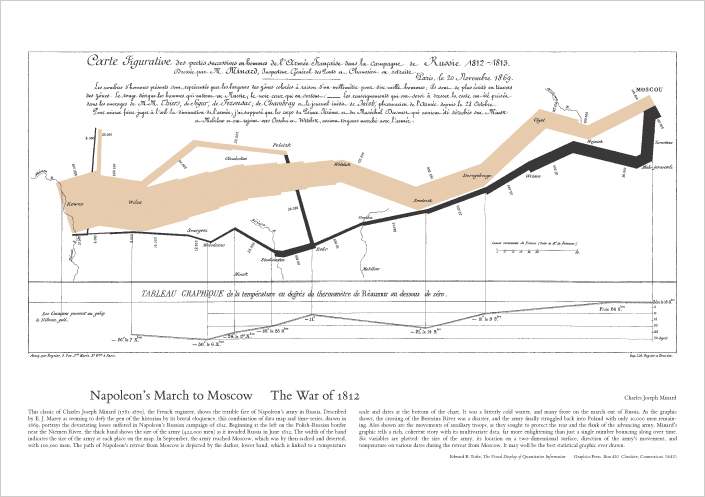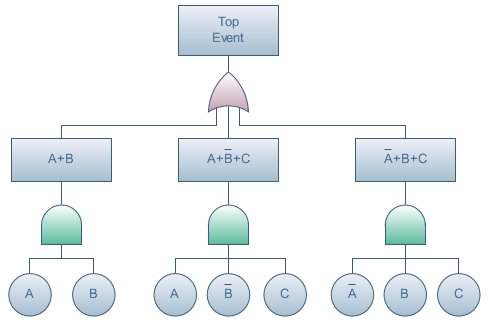Monday, January 28, 2008
Is the Tipping Point Toast?
Very interesting article on social networking and marketing......http://www.fastcompany.com/magazine/122/is-the-tipping-point-toast.html
Interesting story: Interview with Nitesh Dhanjani and Billy Rios, Spies in the Phishing Underground
Interview with Nitesh Dhanjani and Billy Rios, Spies in the Phishing Underground: http://www.net-security.org/article.php?id=1110&p=1
Sunday, January 27, 2008
Single Page

One image I keep is my mind is the Charles Minard poster of Naploean's campaign, via Edward Tufte's incredible research, web site and books: http://www.edwardtufte.com/tufte/index. Every report, presentation (read Edward Tufte's thoughts on Power Point), web page, blog posting, etc. I put together I mentally compare to the Minard Map and realize how far I have to go. I've been able to get project plans near to a single page(example here: http://spreadsheets.google.com/pub?key=puDAkq4iYr846G03FVMT7bg), using a spreadsheet with data density, color and information geared towards to expected viewer...but realize there's huge room for improvement. I just reviewed another project management tool website (not ready to name names) and had to jump to 4 pages prior to viewing what the project was about and what the plan was...not a good thing. Maybe we (meaning me) can focus on coming up with ideas to get PM information down to a single page....including goals/objectives, status, plans, risks.....I think mind mapping is important and could play a role, and perhaps the use of a map like the one above, showing objectives, tasks, etc......any ideas of prior viewed work from others would be appreciated. I think one hurdle is separating the entry/maintenance of project information from project presentation (and gantt charts are far from where we need to be).
Friday, January 25, 2008
The Triangle part 2

Thursday, January 24, 2008
Steve Martin as a Project Manager
I think I've seen the same type of interactions in most of the project meetings I've attended....if Steve Martin is the Project Manager, can you pick out the other participant types (who's the sponsor, who's the IT person, etc.)....great interaction
Wednesday, January 23, 2008
Neat Idea....
I'm not a big WebEx person (I prefer GoToMeeting) and I'm not 100% sure what WebEx is offering here: http://www.weboffice.com/EN/Home/, but the idea of having a built in conference tool within a PM tool is INTERESTING! What if you could schedule meetings, record the online conference call (with video, presentation, etc.), record notes, todo's, etc., create action items during the meeting, etc.......in addition to the standard PM tools (yes, even a stupid gantt chart) - now that's interesting! That helps with communication, assists in taking more accurate meeting notes and the ability to 'go to video' for questions on what was discussed decided....I think it's the next printable white board idea........!!!
Friday, January 18, 2008
Wednesday, January 16, 2008
Fault Tree Analysis

You never know what will turn up when flipping over rocks! Looking for more info on Project Management by Risk, I came across a reference to Fault Tree Analysis (FTA)...basically (from what I currently understand) FTA is a graphical method of determining cause and probability of failure. The top node is the risk and then a circuit like diagram of and and or gates are developed to trace the potential root causes of the risk. There could be multiple layers of contributing factors, each with a probability of occurring. All taken together you end up with a detailed risk analysis and probability....obviously there's a organization dedicated to FTA creation (heck, even PM's have a organization or two), here's some interesting links:
- Fault-Tree Org - http://www.fault-tree.net/
- Fault Tree Analysis of Computer-Based Systems by Joanne Bechta Dugan
- Probablistic Risk Assessment Tutorial by Todd Paulos
- Wikipedia's definiation of FTA: http://en.wikipedia.org/wiki/Fault_tree_analysis
Tuesday, January 15, 2008
PM Hut opens a PM Training/Resource area
http://www.pmhut.com/trainers/index.php
PM Hut has opened the doors to project managers advertising themselves. Not being much of a sales person and not openly looking, I'm not sure what to expect but welcome the opportunity. I've always envisioned myself becoming a well paid project manager, working in a top end interesting 'thinking' company..........and owning a Mansion and a Yacht......maybe this is the door opening for me.
PM Hut has opened the doors to project managers advertising themselves. Not being much of a sales person and not openly looking, I'm not sure what to expect but welcome the opportunity. I've always envisioned myself becoming a well paid project manager, working in a top end interesting 'thinking' company..........and owning a Mansion and a Yacht......maybe this is the door opening for me.
Monday, January 14, 2008
Gathering the risks
I just started to list down some potential project risks on the main website: http://itprojectguide.org/?q=node/59
My initial intent was to create an app in CakePHP to gather risks, associate mitigation plans, etc.......but then decided that until I put together a clear project scope (hoping to develop a project tool with a risk focus one day), I'd more easily create the list via Drupal CCK and at least start gathering some thoughts..........
My initial intent was to create an app in CakePHP to gather risks, associate mitigation plans, etc.......but then decided that until I put together a clear project scope (hoping to develop a project tool with a risk focus one day), I'd more easily create the list via Drupal CCK and at least start gathering some thoughts..........
Wednesday, January 9, 2008
Frank Lloyd Wright - role model

Wright practiced what is known as organic architecture, an architecture that evolves naturally out of the context, most importantly for him the relationship between the site and the building and the needs of the client. (from Wikipedia: http://en.wikipedia.org/wiki/Frank_Lloyd_Wright)
Wow - import thing being the relationship between the site, the building and the needs of the client...or in IT terms - the technology, the application and the client. Sounds like a back to basics approach to me. We (meaning me) often enter a project with preconceived notions, a technology prejudice, a thought that we know more then the client, a miss-construed notion that we know their business as good or better then they do, a feeling that a prior approach will be the right approach because it worked then, etc.......what we are doing is adding risk and reducing value from the start. We need to enter every new project/relation with a fresh open mind, understand the overall landscape and truly appreciate the needs of our clients prior any initial problem solving thought (a very tough thing to do). IT'ers are problem solvers...we need to resist the urge to solve (like resisting the urge to code) until we understand and appreciate what it is that we are being tasked to do.....
Tuesday, January 8, 2008
the triangle

Four points does not a triangle make. We often hear in PM classes about the triangle of doom...scope, cost and time and that a change to one impacts the other and they all impact quality....well, I often think about this triangle thingy and always see how wrong it is. A project is made up of scope (work to do), resources (people doing the work) and quality (how good the work turns out) - each of which impacts and is impacted by cost and time - AND - in addition to this theory layer there's also real world considerations such as skill sets, communication, external business forces, politics, etc. that often have as much impact on a project. So, what I think I'm getting to is that the triangle is inconsistent with even the base PM focus areas and does not take into consideration other factors. If a map does not correctly define the landscape then it becomes more of a cause for problems then a solver of one. I think it's time we think of a new metaphor for PM - the PM triangle needs to be put away and forgotten about.
Sunday, January 6, 2008
Communucations Plan
Here's a link to a simple communications plan template that, if implemented, will give you a tool MOST PM's do not have.....
http://spreadsheets.google.com/pub?key=puDAkq4iYr852_XHVTKkYbw
http://spreadsheets.google.com/pub?key=puDAkq4iYr852_XHVTKkYbw
Friday, January 4, 2008
Communication - #1 risk reducer

I believe that the #1 job of a project manager is to reduce risk - AND - if so, then the #1 tool to do so is effective communication. There are many books and articles regarding effective communication...unfortunately there is no silver bullet..you can read all the books, attend all the conferences, etc...but at the end of the day the most effective means (that I found) to improving your communication skills is VERY objective introspection...forget you are you and examine what it is that you're communicating and the response to your efforts. After every encounter, review the message that you were trying to communicate, openly accept the response (no matter how ugly it gets) and reflect on what you could have done differently to better get your message across. Some warning signs - when you say:
- no one understands me
- I'm better off talking to the wall
- I've told them 100 times and it's still not sinking in
- No matter what I say the response is negative
- They're to busy talking to listen to what I'm saying
- etc, etc, etc
http://itprojectguide.org/node/51
Wednesday, January 2, 2008
OpenSUSE!

Not sure why, but I got the urge to try another Linux distribution...a toss up between openSUSE and Fedora. After some quick research (Wikipedia Linux comparison to start with: http://en.wikipedia.org/wiki/Comparison_of_Linux_distributions) I selected openSUSE...what a pleasant surprise. I thought Ubuntu was a clean install and easy to use...openSUSE takes it one step further...the install does not distinguish between workstation and server installs via unique download cd images (Ubuntu does)...so it's a bit longer, but clean. After the initial download and destroy (I like to see how far I can take the OS until it breaks.....) the final clean one took about 1 hour and the end result was a fast, clean running OS with all the standard tools (via Gnome) and a complete LAMP install including MySQL Admin tools!
A Windows killer? perhaps....I would vote for it!
Subscribe to:
Posts (Atom)





